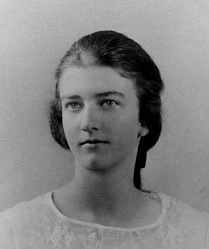Mercy Seiradaki facts for kids
Quick facts for kids
Mercy Seiradaki
|
|
|---|---|
 |
|
| Born |
Mercy Burdett Money-Coutts
16 April 1910 |
| Died | 1 September 1993 (aged 83) |
| Nationality | British |
| Occupation | Archaeologist |
| Known for | Working with John Pendlebury |
| Spouse(s) | Michael Seiradakis |
| Children | John Hugh Seiradakis, Sophia Hester Seiradaki |
Mercy Seiradaki (born Mercy Money-Coutts; April 16, 1910 – September 1, 1993) was a British archaeologist. She spent many years working in Crete, an island in Greece. Mercy helped with important digs, especially at Knossos, alongside John Pendlebury. She also wrote books about ancient pottery.
During World War II, she worked at Bletchley Park, a secret code-breaking center. Later, she joined the Red Cross and helped people in Crete after the war. She lived in Greece for the rest of her life.
Early Life and Education
Mercy Burdett Money-Coutts was born on April 16, 1910. Her family lived in Devon, England. She was taught at home and later went to Oxford University. There, she studied Modern History.
Mercy enjoyed outdoor activities like deer stalking. This helped her build strength and stamina. These skills were very useful for her later work in archaeology. She was also good at drawing and loved to read.
Marriage and Family
Mercy married Michael Seiradakis when she was 37 years old. Michael was from a village in Crete. After they married, Mercy and Michael had two children. Their son, John Hugh Seiradakis, became an astronomer. They also had a daughter named Sophia Hester.
Discovering Ancient History
After finishing university in 1932, Mercy wanted to work in archaeology. She asked Arthur Evans, a famous archaeologist, if she could help at Knossos. At that time, John Pendlebury was in charge of the digs there. He became a very important guide for Mercy.
Mercy joined the British School at Athens as a student. She became friends with another archaeologist, Edith Eccles. They worked and traveled together. Mercy was known for her amazing endurance. She preferred to walk long distances over mountain paths instead of riding a mule!
Working at Knossos
Mercy and Edith helped to sort and date thousands of ancient sherds (broken pieces of pottery) at Knossos. These pieces were stored in 2000 boxes! They published their findings in different parts.
Mercy also went on many trips in central Crete with Pendlebury. They looked for new archaeological sites and checked on old ones. Mercy drew half of the pictures for Pendlebury's book, The Archaeology of Crete. She was especially good at drawing seal stones and pottery patterns.
Exploring Greece and Beyond
In 1934, Mercy explored many ancient sites in mainland Greece. She returned to Crete in 1935. She continued to work with Pendlebury, especially around Lasithi in central Crete. She helped with digs and published reports.
Mercy also traveled to the Middle East and Egypt. She wanted to find links between the Minoan civilization (from Crete) and cultures in the East. Arthur Evans, who had started the Knossos digs, trusted Mercy's work. He asked her to help organize an exhibition in London. She also helped with a display at the Ashmolean Museum.
Pottery Expert
Mercy became an expert in ancient pottery. When the cave at Trapeza was dug up, she was in charge of studying the pottery. She created a detailed book with drawings and descriptions of the pottery and other small finds. About three-quarters of the published work about the Trapeza cave was done by Mercy.
She did similar work for other digs led by Pendlebury in Lesithi. Her most famous work on pottery was published in 1960. It was called Pottery from Karphi.
Mercy loved life on Crete. She learned to speak modern Greek. She got to know the island, its people, and its culture very well. She was known for getting along well with the local workers at the dig sites.
World War II and Helping Others
When World War II started, Mercy worked at Bletchley Park. This was a top-secret place where codes were broken. She likely worked as a secretary there.
In 1944, she joined the Red Cross. She was sent to Egypt. Mercy wanted to return to Crete. Many people she knew there had joined the Resistance against the war. Mercy and her friend Edith managed to travel to Crete in 1944, even though it was still dangerous.
After Edith left, Mercy stayed in Crete. She worked for the United Nations Relief and Rehabilitation Administration (UNRRA). She was given a bronze medal by the Greek Red Cross for her bravery. She became a local hero. Through UNRRA, she met her future husband, Michael. He had also received many honors for his bravery during the war.
Later Life in Greece
After marrying and having her children, Mercy lived in Crete until 1962. She continued her Red Cross work. She also stayed involved with archaeology on the island. Her home was always open to English-speaking visitors.
She worked on the drawings for her Karphi pottery book during this time. She was also a member of the first British Council in Chania. In 1962, her family moved to Athens. There, Mercy was active in the British School library. She passed away on September 1, 1993.

